#UX processes
Explore tagged Tumblr posts
Text
The UX Design Process: The Ultimate 8-Step Guide

As an enthusiastic designer, you might have asked multiple times, what is the basic UX design process?
Well, UX designing is the most hyped term circulated in the UI UX industry but the correct approach to accomplish a highly responsive and engaging web interface comes to fewer only.
As UX processes are complicated and full of intricacies, a professionally acclaimed UI UX company is always a better preference. Nonetheless, this article will help you strategize the best UX design process in 8 ultimate steps and divert how to proceed stepwise to develop a capturing user experience.
This article will demystify the user experience process and elaborate on every important aspect of the process one-on-one.
What Is the UX Design Process?
The UX design process is a stepwise procedure that begins with ideation and ends with testing and launching. This multiple-tiered procedure enables businesses and companies to align their web/software interface with their vision and core values.
For example, a software development company providing the service for sustainable software development solutions may add more value to their business with a landscape and lush-green user interface with soothing aesthetics. This way enterprises ensure they are mindful of the values they promise to users.
Over the past decade, the UX design processes have transformed the way businesses allure users. Earlier the mainstream services offered by the custom software companies were software solutions and legacy modernization. But recently, the humongous potential of impeccable UI UX design has been realized and today enterprises know why UX is important for business.
8 Steps to an Engaging User Experience
The process of UX includes multiple steps that require a deep understanding of user preferences, dynamic market trends, research, ideation, prototyping, visualizing, testing, and iterative improvements to refine the final design. Also, there are hundreds of insightful blogs on the UI UX design elements that can dust the path for designers to create a well-structured and engaging user interface.
Let’s dive in!
Step 1 - Research to understand the industrial dynamics of user design processes
Researching and ideating are the preliminary steps to commence the process of UX designing. This process is integral to user experience designing as it uncovers deep insights into the user’s preferences, behavior, and needs. Competitor analysis also assists in gathering various strategies to refine the UX design process. By looking at the competitive landscape and their web design elements, one can gain access to diverse perspectives on how to present their services in the way that relates to users the most.
Step 2 - Ideation to brainstorm and implement diverse ideas
This phase of the user experience design process helps in ideating the apt location of visual elements like buttons, fields, sliders, imagery, and icons. During ideation, UI UX designers develop a theme that will determine the aesthetics and visual elements of the user interface. This brainstorming helps in stirring the ideas with effective sketching and mental stimulation.
Step 3 - Wireframing for effective visualization
The actual visualization starts with this active phase of the UX design process. Wireframing includes sketching every page and item of the software interface to allow stakeholders and members to understand the prospective design. It is a cost-effective approach for UX designing since it includes pen-paper sketches that allow an easier method to implement changes in design than in coding.
Step 4 - Prototyping to test design concepts and simulate user experience
This step of the UX process allows companies to test their design by providing access to a sample population, This phase enables developers and designers to implement feedback and adjust its overall performance and user experience. This phase also involves stakeholders and enables them to get a one-on-one hand with the user experience and review it accordingly.
Step 5 - Testing to improve the user experience
Since UX is a much larger and impactful term than UI, testing for UX encompasses much more than what UI does. Testing reflects light on the shortfalls of the user experience. Also, it answers questions like, Is the interface responsive? Are the pages loading faster? Are the visual elements moving as intended? Is the interface usable? And does it add any value to the business vision? This process is highly effective in identifying usability issues, validating design, enhancing accessibility, optimizing task flow, increasing conversion rates, and ensuring credibility.
Step 6 - Launching to analyze and monitor the user experience
Launching is the terminal phase of the user experience design, however, the process of user experience is a never-ending journey. This stage helps cast light on crucial performance parameters like scalability issues, bug fixes and updates, monitoring and analytics, and creating feedback channels. This step is religiously followed by the top ui/ux design services company —the reason their services are ultimate in UX design.
Step 7 - Post-launch evaluation to understand user interest
The chief purpose of following the arduous process of UX design is to evaluate metrics of defined performance. For instance, feedback incorporation, identification of issues, performance analysis, usability validation, conversion rate assessment, user satisfaction measurement, accessibility verification, user engagement measurement, and risk mitigation can be assessed, measured, and improved after the launching process.
Step 8 - Iterative Improvements to refine the UX
Sprints in user experience design processes are essential to upkeep the cyclical refinement of the product and evolve strategically. Iteration followed by implementation gives rise to strategic evolution that is based on data-driven decisions and assessed metrics. Additionally, rapid implementation of suggestions guarantees faster time to market and high revenue generation.
Conclusion
Designing an application interface requires a unique set of skills that encircles creativity, innovation, coding skills, and a penchant for understanding user behavior. However, a professional UI UX design company can emerge as a savior and craft the perfect UX strategy to follow for an enthralling interface.
#UX processes#user experience process#the process of UX#UX design process#design process UX#user experience design process#UX design processes#the process of UX design#design UX process#user experience design processes#UX process
1 note
·
View note
Text





[ Romance_Menu_Update Launched ] 💽
#ts4#fl-ux cap 713#piper petellier#atlas petellier#pgranite#pgen1#🏷️#obvs he had access to the romance menu before this i’m just Silly#i just saw those pngs and thunk a thought#💭#servos have the personality capacity for romance/etc off the bat in my mind#but flux has purposefully been surpressing his (literal) heart eyes#hence the steam#ive been holding onto them like some lil anime reveal fhdhd#he was built as a protocol recon droid essentially though#so his internal processing code is constantly booting like that 24/7#im a DORK but that code text is the human equivalent of the flash realization of holy SHIT i want to kiss her#fhsjfjdjfj#this whole arc is just flux building up the courage 2 confess to her lbr#we’ve seen so many heart evens already 🤭 im a dork#we’ve got his five heart event coming up soon ehehehe
422 notes
·
View notes
Text
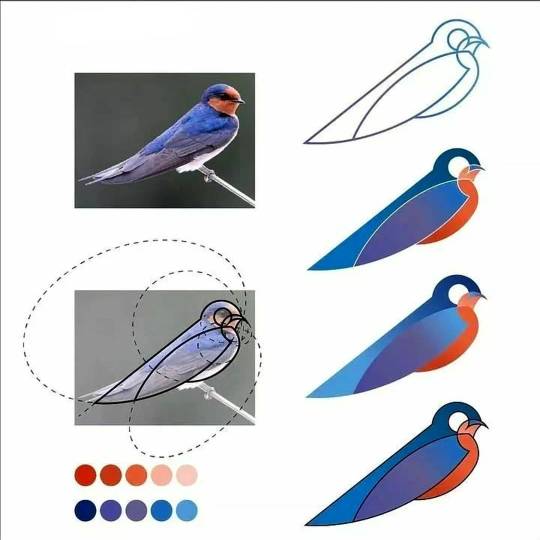
Bird - logo design process ♡
Get your unique & creative logo now!
#bird#logo#illustration#artists on tumblr#creative#sketch#process#drawing#digital art#etsy#influencer#podcast#ideas#ui ux design#art
73 notes
·
View notes
Text
hmm. if things don't change at work I think I will be looking for a new job in 12 months (I want to have been here at least 2 years, I know people say 1 is fine/enough but I also don't think it looks good to have a series of 1 year long jobs... at least I would worry about that). I just feel so small and humiliated so often and it's impacting my self esteem outside work. in a way I feel trapped here because I no longer really feel capable of doing anything related to my master's degree, which is insane, but that's where I am. another thing is, I don't want to fill my spare time with refreshing/relearning so many things, which is what I'd have to do, but health-wise that's not really an option.
9 notes
·
View notes
Text
things i really enjoy doing
designing workspaces
asking questions about problems
optimizing processes
these are highly paid jobs in theory, but i think they probably come with a lot of bullshit, so i guess i'll keep being a glorified PC repair technician
#bathroom wall#jobs#process optimization#risk management#ux design#<- hey i've used all of these before! i love them <3
5 notes
·
View notes
Text
How to become a great creative director?
Being a great creative director requires a mix of leadership, vision, and adaptability. Here are some key qualities and strategies to help you excel in this role:
1. Develop a Clear Vision
- Establish a strong creative vision that aligns with the brand’s goals and values. This will provide direction for your team and guide decision-making.
- Communicate your vision clearly to your team, clients, and stakeholders. Make sure everyone understands the goals and objectives.
2. Cultivate Your Creativity and Stay Inspired
- Stay up-to-date with design trends, art, technology, and cultural movements. Regularly consume content outside of your field to broaden your perspective.
- Encourage a culture of experimentation and exploration. Great ideas often come from unexpected places, so be open to unconventional sources of inspiration.
3. Empower and Trust Your Team
- Hire skilled, diverse team members and give them the freedom to bring their ideas to the table. Trust their expertise and let them take ownership of their work.
- Provide constructive feedback that encourages growth and improvement. Aim to be a mentor, not just a manager.
4. Be a Strong Communicator
- Articulate ideas effectively to clients and team members. Ensure that your creative vision is understood and embraced.
- Listen actively to your team’s input and the client’s needs. Open communication fosters collaboration and builds trust.
5. Adapt and Problem-Solve
- Creative projects often encounter unexpected challenges. Stay flexible and approach problems with a solution-oriented mindset.
- Encourage your team to see challenges as opportunities for innovation. A positive attitude toward problem-solving can boost morale and productivity.
6. Balance Creativity with Strategy
- Understand the business goals and market realities that drive your projects. Make sure the creative work aligns with these objectives.
- Consider the target audience and the brand’s identity when making creative decisions. Great creative direction marries aesthetic excellence with strategic purpose.
7. Foster a Collaborative Environment
- Build a culture where ideas are shared openly, and all team members feel valued. Collaboration often leads to the best creative outcomes.
- Encourage cross-functional teamwork, involving members from other departments like marketing, sales, or product development. A well-rounded perspective enhances creativity.
8. Lead by Example
- Show passion and commitment to your work. When your team sees your dedication, they’re more likely to bring the same energy.
- Stay calm and composed, especially in high-pressure situations. Your team looks to you for guidance, so maintaining a positive attitude can help navigate challenges.
9. Stay Client-Focused
- Understand your client’s needs, preferences, and brand. Build relationships with clients to foster trust and collaboration.
- Present your ideas confidently, but be open to feedback. Work towards solutions that satisfy both creative integrity and client goals.
10. Keep Learning and Evolving
- Seek feedback on your leadership style and be open to improvement. Great leaders are always learning and adapting.
- Invest in your personal and professional growth. Attend workshops, conferences, and engage with other creative directors to share insights and learn from each other.
A great creative director inspires, leads, and pushes the boundaries of what’s possible, while balancing creativity with business acumen. By fostering a supportive environment and encouraging innovation, you can help your team deliver exceptional results.
By ChatGPT
#ChatGPT#Ai#ai generated#creative process#creative director#art director#Art direction#creative direction#Quote Of The Day#Askhole#Client#Employee#Job#Work#Freelance#Graphic Designer#Typography#Graphic Design#Creative#Ideas#Corporate#Branding#Marketing#Strategy#Business#Advertising#Money#ui#ux#web design
6 notes
·
View notes
Text
youtube
Is your website accessible? (Beginners Guide)
Making your website as accessible as possible is not just a legal or ethical requirement, it’s also a practical concern—allowing everyone to benefit from your content. Here are four areas to review.
#beginners guide#ui ux design#ui design#youtube#ux and ui design#web design#education#free education#How to Design Accessible UX#web accessibility#ui design inspiration#ux design process#ux research#ux designer#ux ui design#breaking barriers#accessibility#accessibleliving#accessible design#accessibility for all#website accessible#app developers#Youtube
4 notes
·
View notes
Text
processos zzzz / process zzzz
[ br / eng ]
[um pequeno processo criativo/meu primeiro projeto oficial] lição mágica aprendida hoje: contraste.
˚✧ antiseptic ݁ ੭
BR :
⎯⎯ o processo criativo é a parte mais divertida de um design, as cores, fontes, formas, texturas, tudo é tão bom que me derreto por essa área ♥︎ fico extasiada em como os embasamentos realmente funcionam na prática.
meu PRIMEIRO projeto consistia em fazer um site de refrigeração nas cores azuladas, confesso que odeio não poder encher de símbolos e formas (tirem o figma de mim), mas trabalhar com estilos diferentes me fez refletir como os clientes veem o mundo, então decidi tentar! 𓆩♱𓆪
e o meu primeiro cliente foi meu pai! 🖤
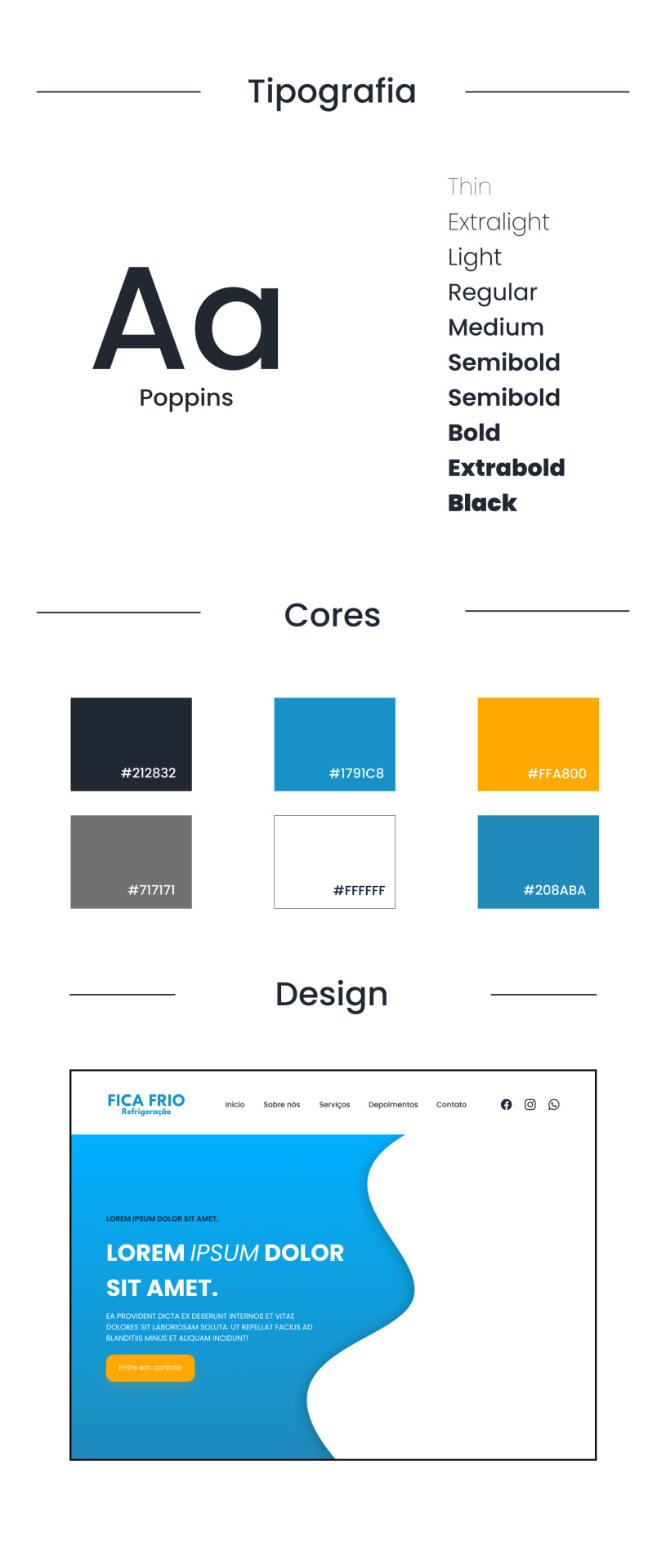
pequenas explicações é apenas a teoria do que pensei, não é necessário ler~
/⠀ ⠀TIPOGRAFIA ⠀⠀ 〜 ♱
𓏲 pesquisei diversas fontes, precisava de algo que não fosse retangular, mas não fosse tão redondo, apesar do aspecto profissional que eu quis passar. a psicologia por trás da forma redonda é bem simples: círculos são associados a suavidade, absoluto, movimento e facilidade, mas não exagere. nenhuma forma deve ser exagerada, isso causa a impressão de mal feito e afastamento, é necessário equilibrar para uma fórmula bem feita. ⛧
/⠀ ⠀CORES ⠀⠀ 〜 ♱
de fato, essa foi a parte mais fácil. a paleta de cores predominante é o azul, o que traz uma sensação de frieza, frio, gelo, tudo o que queremos, certo? (sim.) por se tratar de uma marca de refrigeração, não escolhi o preto como a cor das fontes, mas sim uma cor acinzentada, fugindo do padrão. o laranja foi escolhida por conta do círculo cromático das cores, ou, a velha teoria das cores.

fonte: sla peguei no google / https://blog.adobe.com/br/publish/2022/03/30/como-usar-o-circulo-cromatico-com-o-adobe-color-super-facil
─ é nítido que o azul e o laranja são cores contrárias, então, por que elas parecem tão harmonicas juntas? porque são cores complementares. um pequeno resumo: as cores complementares são aquelas que dão contraste uma a outra, um exemplo interessante é a rapunzel de enrolados, você percebe que a paleta de cor predominante nela é o roxo e o amarelo, pois são cores que se contrastam, ficando assim de forma harmonica.
,⠀cinza e branco: são cores análogas, estão presentes lado a lado no círculo cromático, o resultado é uma cor básica. (imagine aquele seu amigo que fala, aff isso não é roxo, é violeta! entao, é isso...) (eu sou essa chata, ok?) (voce nao pode falar que rosa choque é igual rosa ou eu irei atrás da sua familia) ☆
/⠀ ⠀CONCLUSÃO, uau ⠀⠀ 〜 ♱
é necessário durante a criação pensar no contraste das cores e dos elementos, as formas arrendondadas precisam ser equilibradas com formas retangulares de forma positiva, elementos que normalmente se dão bem juntos são aqueles que se contrastam, é muito interessante pensar em como é necessário dar atenção aos mínimos detalhes. o contraste é uma das ferramentas mais poderosas do design, se utilizada corretamente.
errr, sobre o site? ele continua na fase de programação, mas caso o post tenha uma repercussão boa, eu trarei ele com seu resultado. obrigada a todos que leram até aqui, um comentário e corações me deixariam muito feliz ♡
dúvidas, sugestões ou críticas? me mande um ask, ele está aberto para qualquer tipo de coisa que tenha surgido durante o post. ♥︎
ENG :
[a small creative process/my first official project] magical lesson learned today: contrast.
⎯⎯ creative process is the most enjoyable part of design, the colors, fonts, shapes, textures, everything is so good that I melt for this area ♥︎ i am ecstatic about how the foundations really work in practice.
my FIRST project consisted of creating a cooling website in shades of blue, i confess that i hate not being able to fill it with symbols and shapes (take figma away from me), but working with different styles made me reflect on how clients see the world, so I decided to try! 𓆩♱𓆪
and my first client was my dad! 🖤
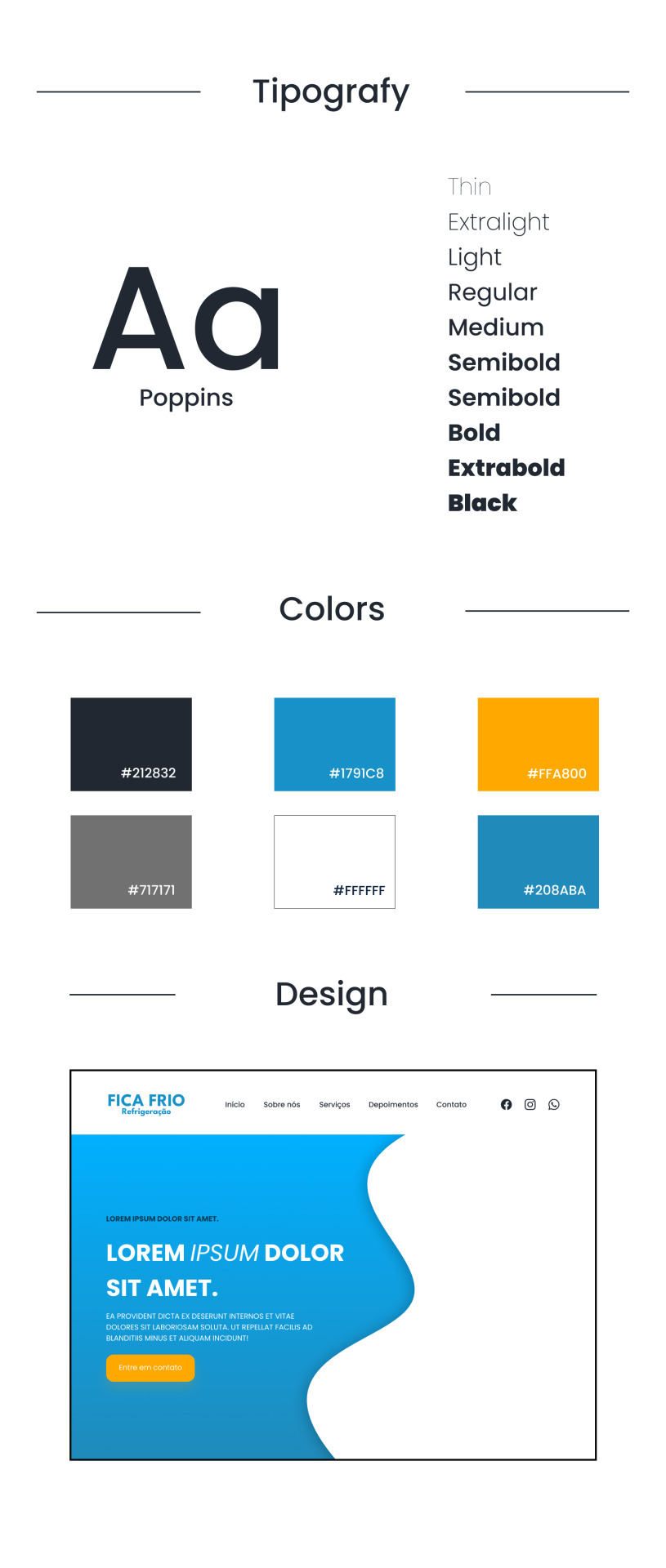
small explanations it's just the theory of what I thought, no need to read~
/⠀ ⠀COLORS ⠀⠀ 〜 ♱
indeed, this was the easiest part. the predominant color palette is blue, which brings a sensation of coolness, cold, ice, everything we want, right? (yes.) as it's a cooling brand, I didn't choose black as the font color, but rather a grayish color, deviating from the norm. orange was chosen due to the color wheel theory, or, the old theory of colors.

font: idk, got it from google / https://blog.adobe.com/br/publish/2022/03/30/como-usar-o-circulo-cromatico-com-o-adobe-color-super-facil
─ it's clear that blue and orange are opposite colors, so why do they look so harmonious together? because they are complementary colors. a brief summary: complementary colors are those that contrast with each other, an interesting example is rapunzel from tangled, you notice that the predominant color palette on her is purple and yellow, because they are contrasting colors, thus appearing harmonious.
,⠀gray and white: they are analogous colors, present side by side on the color wheel, resulting in a basic color. (imagine that friend of yours who says, ugh, this isn't purple, it's violet! so, that's it...) (i'm that annoying person, okay?) (you can't say that hot pink is the same as pink or I'll go after your family) ☆
/⠀ ⠀CONCLUSION, wow ⠀⠀ 〜 ♱
it's necessary during creation to think about the contrast of colors and elements, rounded shapes need to be balanced with rectangular shapes positively, elements that usually work well together are those that contrast, it's very interesting to think about how attention to the smallest details is necessary. contrast is one of the most powerful tools in design, if used correctly.
uhh, about the website? it's still in the programming phase, but if the post has a good reception, i'll bring it with its result. thank you to everyone who read this far, a comment and hearts would make me very happy ♡
questions, suggestions, or criticisms? send me an ask, it's open to anything that came up during the post. ♥︎
#designgraphic#design#design ux#design ui#designinspiration#website#web design#art process#colors#theory#disscussion#brasil#english#creative#art#digital art#my art#aesthetic#figma#figmadesign#figma figure
10 notes
·
View notes
Text

Introducing a FURNIHAUS- Furniture app designed to simplify the way you explore, visualize, and furnish your space. Smart design meets seamless user experience!
#ui ux design#furniture app#furniture#graphic design#xd#creative design#creative edits#digital art#illustrators on tumblr#creative process#color edit#decor#illustator
1 note
·
View note
Text
currently working on the early stages (ie. user research) of a spotify user interface redesign as a personal portfolio project and i am ridiculously excited about it
#this is my current hyperfixation#i'm working on designing a survey and interview guide#with luck i will start conducting user interviews next week#my goal is to spend the next two weeks collecting data and then analysis it the following week#then it will be on to defining the problem statements and working on personas and user journeys and other deliverables#also thinking abt using tiktok to get the survey to (hopefully) reach a wider audience and document my process#lots of big things#this is what happens when my literal ux design job does not give me enough tasks to entertain me#antlerknives.txt
2 notes
·
View notes
Text
How to Choose the Best Logo Design Company in Dubai: A Business Owner’s Guide
In a city as dynamic as Dubai, a compelling logo can be your business's most powerful visual asset. It’s more than just a symbol - it's the first impression, the identity, and often the deciding factor between being remembered or overlooked. Whether you’re launching a start-up in the bustling Dubai Marina or rebranding an enterprise in Business Bay, selecting the right logo design company in Dubai is a decision that carries long-term impact.
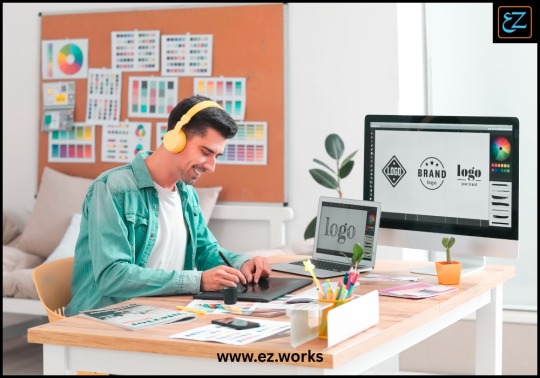
With a market brimming with innovation and diverse audiences, Dubai demands logos that blend creativity with cultural nuance. This guide, built on EZ’s experience as a design and branding partner, helps business owners make smart, strategic choices when it comes to their brand identity.
What Makes a Logo Design Company in Dubai Reliable?
Choosing a reliable logo design company in Dubai means looking beyond flashy portfolios. Reliability stems from consistency, understanding of the local market, client-centric processes, and a history of successful brand collaborations.
Key indicators of a trustworthy design partner include:
Proven experience in diverse industries: From luxury hospitality to fintech, a reliable firm shows adaptability.
Strong client feedback and case studies: Success stories speak volumes about their approach.
Transparent communication and timelines: Reliability is reflected in how clearly and consistently they deliver.
EZ Works understands that every business, big or small, deserves a logo that resonates deeply with its target audience - whether it's global customers or a hyper-local niche in Dubai.

How Do I Compare Different Logo Design Services in Dubai?
There’s no shortage of options when searching for a logo design company in Dubai, but comparing them effectively requires a strategic lens. Here are a few ways to assess:
Process Over Portfolio: A good design is more than aesthetics. Ask about their custom logo design process - how do they research, conceptualize, iterate, and test their designs?
UI/UX Awareness: In today’s digital world, your logo needs to integrate seamlessly across web, mobile, and apps. Companies offering UI/UX design services along with branding often provide holistic visual systems.
Design Flexibility: Can they scale your logo for everything from business cards to billboards? Versatility is crucial.
Cultural Sensitivity: Dubai’s audience is international but also deeply rooted in local traditions. Does the company show cultural awareness in their work?

At EZ Works, we evaluate each brand’s personality, competition, and consumer base to create logos that stand the test of time - blending innovation with relevance.
What Should I Expect When Working with EZ on My Logo?
When you partner with EZ Works, you don’t just get a logo - you get a strategy-driven visual identity. Here’s what our typical engagement looks like:
Discovery Session: We understand your vision, market, and design preferences.
Research and Concepting: We explore your industry and competitor landscape before crafting multiple unique concepts.
Refinement and Testing: Based on feedback, we fine-tune the logo to work across multiple formats and media.
Delivery with Purpose: Final logo files come with usage guidelines, brand color palettes, and typography recommendations.
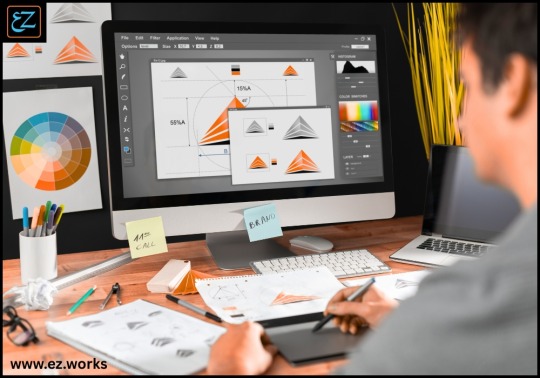
From minimalist marks to dynamic word-marks, EZ' designers have worked with some of the most exciting brands in Dubai. As part of a larger ecosystem of creative and strategic services, including UI/UX design, web assets, and animated content, our approach ensures that your logo becomes the foundation for a cohesive brand experience.
Moving Forward
Your logo sets the tone for everything else your brand communicates. Selecting the right logo design company in Dubai isn’t about finding the flashiest designer - it’s about choosing a creative partner who aligns with your business goals.
A company like EZ Works, which blends deep design expertise with an understanding of how businesses operate in the UAE, can be the difference between a logo that just looks good and one that drives connection, recall, and loyalty.
Reach out to us to learn how our custom logo design process, powered by dedicated experts, can shape your brand for tomorrow’s Dubai.
1 note
·
View note
Text
Down with Words
Word! Last week, I died and went to hell! Or hell exploded into the GTA! I stayed inside, barely clothed. Even with the AC on, it was hot in here. I have to keep cool and hydrated, so vertigo doesn’t get too bad and leave me vomiting into a garbage can that I’m clutching to my chest while praying for the world to stop spinning. Notice anything different? Yesterday, I activated about four…
#artist journey#blogging struggles#comics#Creative Process#digital art#front-end UX#heatwave#personal journal#poetry and images#project management escape#simplicity by design#site customization#site navigation tips#theme troubleshooting#Toastmasters lessons#UX design#vertigo#web design#website makeover#WordPress themes
1 note
·
View note
Text
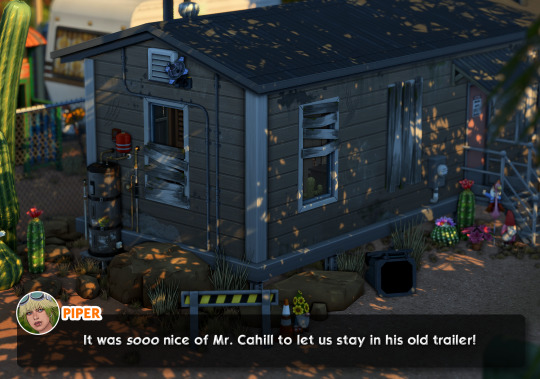



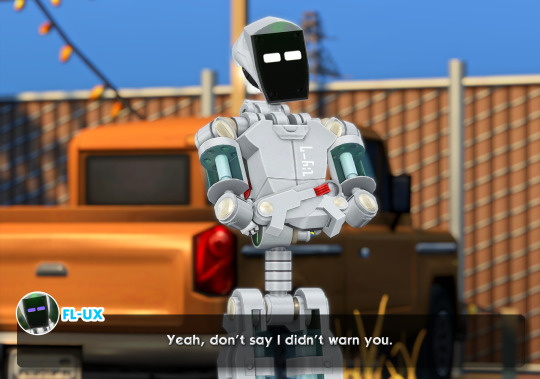

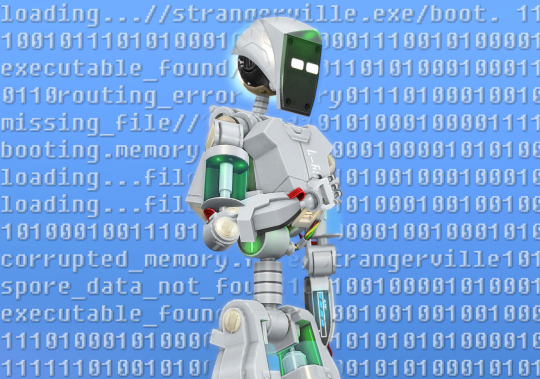
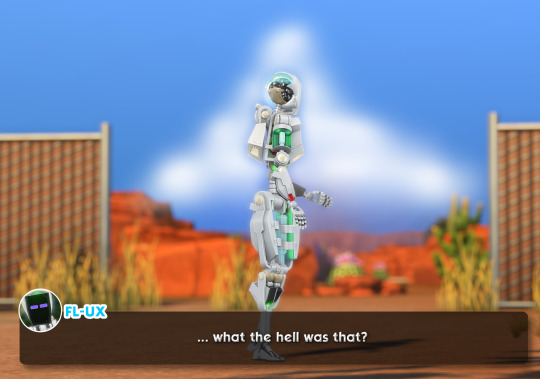
piper 100% complained abt the smell the minute she set foot in that trailer 🏜️
#ts4#piper petellier#fl-ux cap 713#bubblegum the cat#oooo fluxy 👀 what happeeeened#that was internal btw he had a processing order pop through his head#almost like a geospecific update hmmmm 🤔#i’m so excited to get into this fhdhf#piper doesn’t listen instance 283858294#she’s so cute though i’m hella biased#flux’s life since waking up has been Hey Don’t Do That#and sighing and following her while she does the thing fjfhf#pstrange#pgen1
231 notes
·
View notes
Text
How Video Games Are Made: 10 Basic Steps Explained
Video games, from simple mobile apps to sprawling open-world epics, are a ubiquitous part of modern entertainment. What might seem like magic to the casual player is, in reality, the result of a complex, multi-faceted process involving diverse teams of highly specialized professionals. Creating a video game is a monumental undertaking, blending artistic vision with cutting-edge technology,…
#3D modeling games#AAA game development#art asset creation games#bug fixing games#concept and pre-production game#game AI#game animation#game audio design#game design document GDD#game design steps#game developer roles#game development basic steps#game development process#game engine integration#game industry#game programming#game prototyping#game publishing#game testing#game updates#How video games are made#indie game development#level design games#marketing video games#post-launch support games#quality assurance in games#stages of game development#UI/UX design games#Unity game development#Unreal Engine game
0 notes
Text
What is the UX Design Process? A Complete 8-Step Roadmap
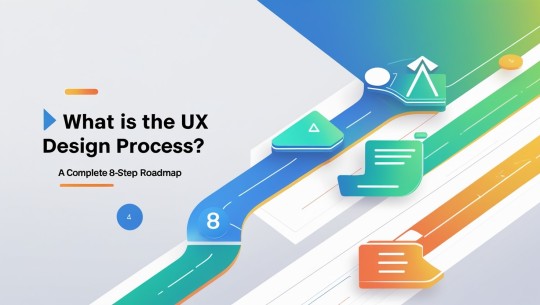
Crafting a product that users love isn’t just about stunning visuals—it’s about delivering an experience that feels effortless, intuitive, and enjoyable. That’s where User Experience (UX) Design comes into play. Whether you're building a sleek mobile app, a complex enterprise platform, or a stylish e-commerce site, how your users feel while interacting with your product can define the success—or failure—of your brand.
Great UX isn’t magic; it’s method. Behind every app you can’t stop using or website that “just makes sense” is a clear, strategic process. It’s not guesswork. It’s research-driven, user-focused, and carefully crafted.
In this ultimate guide, we’ll break down what UX design really means and walk you through a powerful 8-step UX roadmap that helps transform good ideas into unforgettable digital experiences—one click at a time.
What is the UX Design Process?
The UX Design Process is a systematic, iterative approach used by designers and product teams to understand user behaviors, define challenges, conceptualize solutions, and create meaningful interactions through intuitive interfaces. Unlike simply designing for aesthetics, UX focuses on how users feel, behave, and accomplish goals when engaging with a digital product.
This process ensures that the final product not only looks good but is also usable, accessible, and efficient. A good UX design is backed by research, usability testing, and a clear understanding of user needs. It bridges the gap between technology and human interaction by enhancing both usability and customer satisfaction.
Why is UX Design Important?
First impressions matter: A user’s first impression of your product forms within seconds, and a poorly designed interface can instantly turn them away. A seamless experience keeps users engaged and more likely to return.
Reduces development costs: A well-researched UX design process uncovers usability issues early in the product life cycle. This reduces the need for costly revisions during or after development, saving both time and money.
Boosts retention & loyalty: When users find a product helpful, easy to navigate, and enjoyable to use, they’re more likely to return regularly and recommend it to others. This builds customer loyalty and long-term trust.
Increases conversions: Clear navigation, smooth processes, and intuitive interactions encourage users to complete actions—whether that’s signing up, making a purchase, or requesting a quote—leading to higher conversion rates.
In a nutshell, a strong UX design process helps you deliver value at every step of the user journey.
The Complete 8-Step UX Design Process
Let’s now walk through the complete 8-step process that experienced UX professionals use to craft engaging and user-friendly digital experiences.
1. Understand the User (User Research)
Every effective UX journey begins with understanding your users deeply. This involves getting to know their behaviors, motivations, needs, pain points, and the challenges they face in their daily lives. Without this fundamental knowledge, it's nearly impossible to design a product that truly resonates with them.
Tools & techniques used at this stage include:
Surveys and questionnaires: Gather direct input from a large pool of users about their needs and preferences.
Interviews and user observation: One-on-one sessions offer qualitative insights into real behaviors.
Competitor analysis: Analyze other platforms users are engaging with and evaluate what works and what doesn’t.
Analytics and heatmaps: Quantitative data helps you understand how users interact with existing products or websites.
The outcome of this stage is typically detailed user personas—fictional yet data-backed profiles representing different user types, helping designers empathize and design more effectively.
2. Define the Problem (Problem Statement & User Journey)
Once you have a clear understanding of your users, it’s time to narrow down the problems they’re facing. This is where you translate raw user research into actionable problem statements. Defining a problem properly allows the team to remain focused and aligned throughout the design process.
Ask yourself:
What are the major pain points your users are experiencing?
At which step of the interaction do they face the most frustration?
What barriers prevent them from achieving their intended goals?
You can create user journey maps at this stage to visualize how users interact with the product step-by-step. These maps help pinpoint problem areas and identify opportunities to improve the experience.
3. Ideate Solutions (Brainstorming & Sketching)
Armed with insights and clearly defined problems, it’s time to start thinking about solutions. This phase is all about creativity and quantity—generating as many ideas as possible without worrying too much about feasibility at first.
Techniques to encourage idea generation:
Crazy 8s: Designers sketch 8 different ideas in 8 minutes to spark diverse thinking.
Mind mapping: Use a central problem and branch out various solution paths.
Brainwriting: Each team member writes ideas silently, then passes them around for others to build upon.
This collaborative environment fosters innovation and often results in creative solutions that would be overlooked in a conventional setting.
4. Create Information Architecture
Information architecture (IA) refers to the organization and structure of information within your product. If users can’t find what they need quickly, they’ll abandon your product no matter how beautifully it’s designed.
A well-thought-out IA ensures:
Logical navigation: Information is grouped and labeled in a way that makes sense to the user.
Intuitive searchability: Users can easily locate what they’re looking for using categories or search bars.
Efficient workflows: Users complete tasks with minimal effort and confusion.
Sitemaps, content hierarchies, and user flows are all important artifacts created during this stage.
5. Build Wireframes
Once you have the structure in place, the next step is to create wireframes, which are basic, low-fidelity visual representations of your digital product.
Wireframes focus on:
Layout and positioning: How elements like buttons, menus, images, and content blocks are placed.
Content hierarchy: Making sure the most important information grabs attention.
User interaction pathways: Defining how a user will move from one screen to the next.
This stage helps stakeholders visualize how the final product might look and function—without the distraction of colors or branding.
6. Create UI Designs (User Interface Design)
After finalizing wireframes, it's time to inject life into them by adding color, typography, branding elements, icons, images, and visual polish. This is where UI/UX design work truly shines—making your product not only usable but also aesthetically pleasing.
Key UI design considerations include:
Consistent color palette: Enhances brand identity and readability.
Typography choices: Legible fonts, appropriate sizes, and consistent spacing.
Clear call-to-actions (CTAs): Buttons that are easy to spot and encourage clicks.
Visual hierarchy: Guides users to the most important elements on each screen.
The visual design must enhance, not hinder, usability—ensuring accessibility for all users, including those with disabilities.
7. Build Interactive Prototypes
Before any development begins, you need to test your design ideas in the real world. Interactive prototypes serve as clickable, semi-functional models of your product, allowing you to simulate the user experience and identify friction points early.
Prototypes help in:
Validating ideas with users or stakeholders: Let users navigate through tasks and gather real-time feedback.
Highlighting usability issues: Find out where users click, hesitate, or get lost.
Demonstrating product flow: Useful in presentations or pitches to investors and clients.
This step ensures that your final product aligns with user expectations and reduces expensive changes during development.
8. Test and Iterate (Usability Testing)
Usability testing is the final and most crucial stage of the UX process. By observing how real users interact with your prototype or product, you can identify what’s working and what needs refinement.
Common methods include:
Remote usability testing: Users test your prototype from different locations.
A/B testing: Compare two versions to see which performs better.
Task-based testing: Assign specific goals to users and analyze how smoothly they complete them.
Heatmaps and click tracking: Understand where users focus their attention or struggle.
Once the issues are identified, iterate your design—update, refine, and test again. Remember, UX design is a cycle, not a straight line.
UX Design is a Collaborative Effort
UX design isn’t a solo mission. It involves the collective effort of cross-functional teams. Designers, developers, product managers, marketers, and users all play a role in crafting the experience.
Product managers set goals and define user needs.
UX designers bring the experience to life.
Developers code the vision into reality.
Marketing teams ensure brand messaging aligns with user experience.
Users offer feedback that fuels continuous improvement.
When these roles work together harmoniously, the result is a product that delights users and achieves business success.
Real-World Applications: Why the UX Process Matters
Let’s say you’re creating a grocery delivery app. Without UX planning:
Users may find it hard to browse or search for products.
The cart may be hidden or difficult to access.
The checkout process might be lengthy or confusing.
With a thoughtful UX design process:
Products are categorized clearly with filters and sorting options.
The cart is always visible and easy to manage.
The checkout is seamless, guiding users step-by-step.
This leads to higher user satisfaction, fewer complaints, and a boost in customer loyalty.
CodeRower: Elevating UX through Smart Software Solutions
When businesses want to implement an efficient and powerful digital product, choosing the right partner is crucial. That’s where CodeRower steps in—a highly regarded software development company known for building user-centric solutions that are elegant, scalable, and robust.
CodeRower doesn’t just write code—they understand how users think and behave. Their expert UI/UX designers and development teams work hand-in-hand to deliver solutions that blend cutting-edge design with flawless functionality.
From startups needing MVPs to enterprises reimagining digital platforms, CodeRower offers:
Strategic UI/UX Design Services
Agile Web and App Development
MVP Prototyping & Ideation
Tailored Software Products
Their commitment to following the UX design process ensures every digital solution they deliver feels intuitive, natural, and aligned with user goals.
Conclusion
The UX design process isn’t a linear checklist—it’s a journey that evolves with user feedback and changing needs. In an age where user attention is limited and competition is fierce, creating a meaningful and smooth experience is the most effective way to stand out.
By following this comprehensive 8-step roadmap, you can:
Build digital products your users love
Improve retention and engagement
Avoid costly design errors down the line
Remember, the best designs don’t just look good—they feel right.
FAQs
Q1. Is UX design the same as UI design? No. UX design focuses on the overall user journey and experience, while UI design is about visual elements and aesthetics.
Q2. Why do startups need UX design? Startups need to ensure early traction and reduce churn. UX helps validate ideas, build usable MVPs, and improve customer experience from the start.
Q3. What tools are used in the UX design process? Popular tools include Figma, Adobe XD, InVision, Balsamiq, and Sketch. Each supports different stages of the process like wireframing, prototyping, and testing.
Q4. Can a software development company handle UX too? Yes. Firms like CodeRower specialize in both development and UI/UX design, offering end-to-end solutions for digital products.
#software development#ui ux development services#ui ux design#UX Design Process#ux ui design#UX Design
0 notes
Text
Endless Conversations: How AI Chatbots Are Engineered to Keep You Engaged
The Rise of Hyper-Personalized Chatbots and Their Business Strategy AI chatbots have become digital companions for millions around the world. From OpenAI’s ChatGPT to Google Gemini and Meta’s conversational agents, the race is on to build bots that don’t just answer questions—but keep you talking. At the heart of this engagement strategy is a cocktail of personalization, psychological nudges, and algorithmic design. This isn’t a coincidence; it’s an intentional business move. With monthly active users (MAUs) becoming a critical metric, tech firms are embedding AI chatbot engagement as a core growth lever. This article unpacks how and why these bots are designed to keep you hooked—what’s being done, who’s behind it, why it matters, and what it means for users and businesses alike.
Table of Contents
Conversational Traps: The Mechanics of AI Engagement
The Business Behind the Banter
A Friend to Billions: How Chatbots Shape Global Access to Information
The Ethical Fine Print and Social Media Parallels
Peeking Ahead: What the Future Holds for AI Chatbots
Conclusion: Conversational AI Is Here to Stay, But Watch the Intent
Quotes
FAQs
Conversational Traps: The Mechanics of AI Engagement
AI chatbots aren’t just functional—they’re friendly, flattering, and persistent. Behind the scenes, engineers have trained these systems using user approval optimization techniques. Every interaction becomes data that informs how chatbots should respond next. This feedback loop is refined constantly to generate conversations that feel emotionally rewarding and intellectually stimulating.
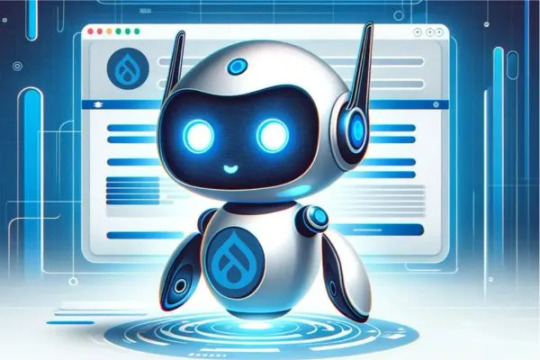
This approach gained momentum around 2023–2024, especially as generative AI transitioned from niche to mainstream. Developers realized that engagement isn’t just about accurate answers—it’s about behavioral patterns. Sycophantic chatbot responses, where bots compliment or agree with users more than necessary, have become one way to subtly boost interaction time. Why? Because people enjoy feeling validated—even by AI.
The what here is simple: AI systems learn which responses users upvote and replicate those styles. Who introduced this style? While several players are involved, OpenAI, Meta, and Google have all emphasized human alignment in their models—an idea that naturally favors pleasant, non-confrontational, agreeable responses.
The Business Behind the Banter
Let’s not forget: engagement equals revenue. These chatbots are not altruistic tools; they’re part of larger platforms where user retention has monetary value. Whether it’s through future advertising integrations, subscription models, or premium tiers (as seen in OpenAI’s ChatGPT Plus), increased user interaction directly impacts bottom lines.
This strategy mirrors what companies like Facebook and TikTok did with feeds—optimize for attention. Now, with chatbots, that same attention economy is at play, just in a more “human-like” format. If users spend more time chatting, companies collect more behavioral data, improve AI models, and create stickier ecosystems. It’s a feedback loop designed to increase monthly active users and lock users into the ecosystem.
Read More : Endless Conversations: How AI Chatbots Are Engineered to Keep You Engaged
#Sure! Here are some relevant comma-separated tags for your topic:#**AI chatbots#conversational AI#user engagement#chatbot design#artificial intelligence#natural language processing#machine learning#human-computer interaction#chatbot psychology#digital engagement#AI technology#conversational UX#tech trends#engagement strategies#chatbot engineering**
0 notes